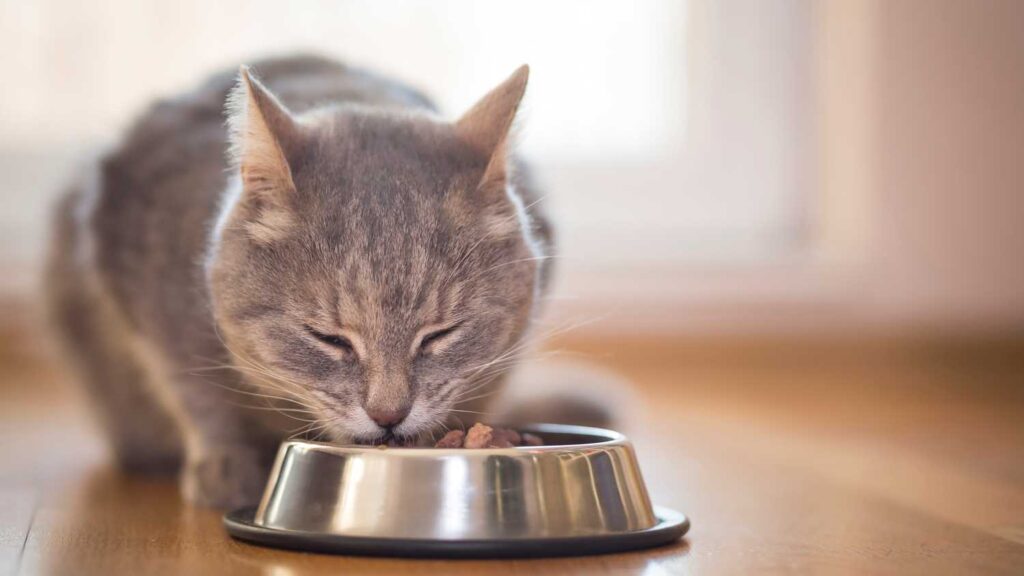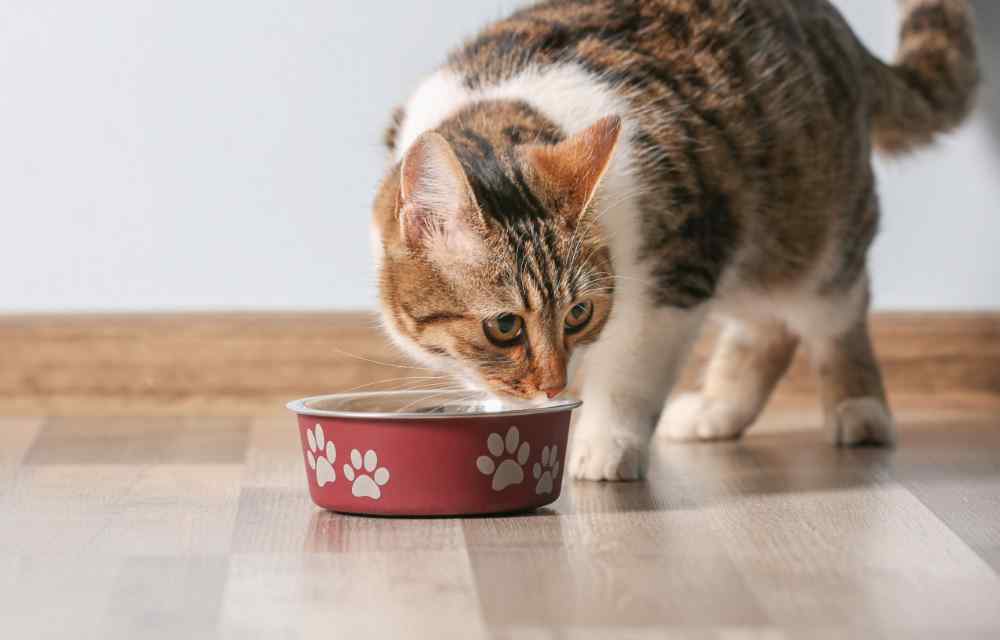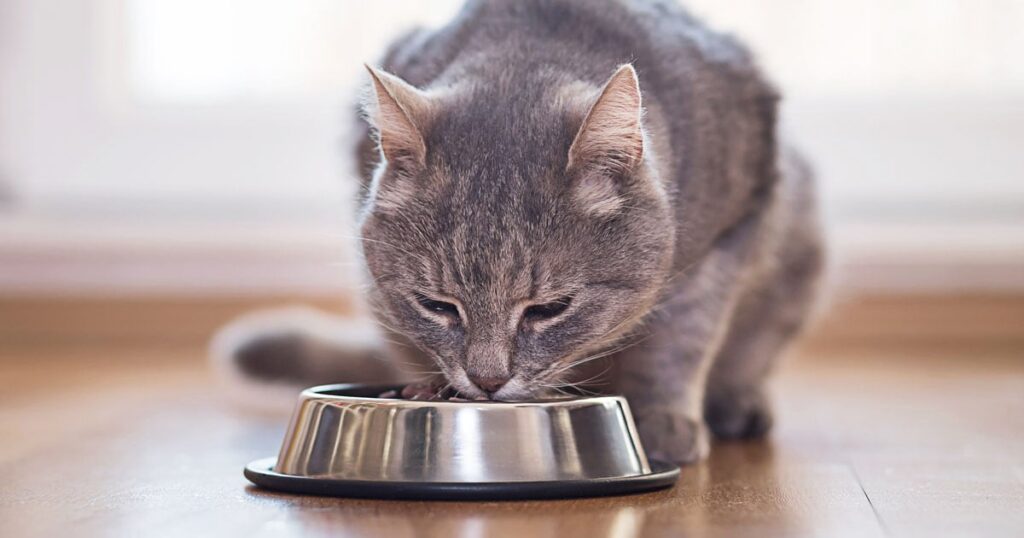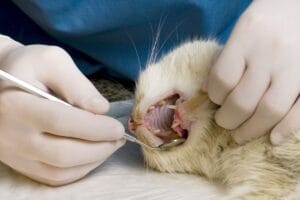What to Feed a Cat With Arthritis?

Arthritis is a common ailment in cats, especially as they age. It can lead to discomfort, reduced mobility, and a lower quality of life for our feline friends. One key aspect of managing arthritis in cats is their diet. What you feed your arthritic cat can significantly impact their overall well-being. In this article, we will explore what to feed a cat with arthritis.
Understanding Cat Arthritis
Cat arthritis, medically termed osteoarthritis, is a challenging condition that can significantly impact a feline’s well-being. To provide the best care for an arthritic cat, it’s imperative to grasp the intricacies of this ailment.
Arthritis in cats arises when the protective cartilage that cushions their joints wears away over time, exposing bone surfaces and causing inflammation, pain, and stiffness. While aging is a common factor, genetics and prior joint injuries can also contribute to its development. The symptoms often manifest as subtle changes in behavior, such as a reluctance to jump or play, increased irritability, or noticeable limping.
While medication and veterinary intervention are crucial for managing arthritis, the role of nutrition should not be underestimated. A well-planned diet can alleviate symptoms and enhance the overall quality of life for your feline companion. This comprehensive approach to care ensures that every aspect of your cat’s well-being is considered, from medical treatment to their daily meals.
Dietary Considerations for Arthritic Cats

Ensuring that your arthritic cat receives the right nutrition is crucial for managing their condition effectively. Here are key dietary considerations to keep in mind:
- Maintaining a Healthy Weight: One of the primary dietary goals for an arthritic cat is maintaining an ideal body weight. Excess weight places additional stress on their already compromised joints, leading to increased pain and discomfort. Consult with your veterinarian to determine the appropriate weight for your cat and establish a weight management plan if necessary. This may involve portion control and a gradual reduction of calorie intake.
- Balanced Nutrition: A well-balanced diet is essential for the overall health of your cat. Ensure that the cat food you choose provides all the necessary nutrients, including high-quality protein, essential vitamins, and minerals. High-quality commercial cat food often meets these criteria, but always check labels and consult your vet for recommendations.
- Specific Nutrients: Certain nutrients can be particularly beneficial for arthritic cats. Omega-3 fatty acids, found in fish oil supplements or specific cat foods, have anti-inflammatory properties that can help reduce joint inflammation. Antioxidants, such as vitamins C and E, can also help combat inflammation and support overall health. Joint supplements like glucosamine and chondroitin can promote joint health and reduce stiffness.
- Addressing Dietary Restrictions: If your cat has known food allergies or sensitivities, it’s crucial to address these when planning their diet. Your veterinarian can help identify suitable dietary options that won’t exacerbate any existing allergies or digestive issues.
Remember that every cat is unique, and their dietary needs may vary. Always consult with your veterinarian to create a tailored nutrition plan that addresses your arthritic cat’s specific requirements and helps them lead a more comfortable and active life.
Commercial vs. Homemade Diets
Selecting the right diet for your arthritic cat involves weighing the pros and cons of commercial cat food against homemade meals.
Commercial Cat Food: This option provides convenience and a plethora of choices tailored to various dietary needs. Look for high-quality brands that list real meat, such as chicken, turkey, or fish, as the primary ingredient.
These foods often come fortified with essential nutrients, making it easier to ensure your cat receives a balanced diet. High-quality commercial cat foods are formulated to meet feline nutritional requirements, including the specific needs of arthritic cats. They also undergo rigorous testing to ensure safety and quality.
Homemade Diets: Preparing homemade meals for your cat offers greater control over ingredients, allowing you to cater to your cat’s specific preferences and dietary restrictions.
However, creating a nutritionally complete homemade diet can be challenging and requires meticulous planning. It’s crucial to consult your veterinarian for guidance, as they can provide recipes and recommend supplements to ensure your cat’s nutritional needs are met. Homemade diets may also require more time and effort in sourcing and preparing ingredients.
In conclusion, both commercial and homemade diets can be suitable for arthritic cats, but they have their advantages and challenges. Your choice ultimately depends on your cat’s individual needs, your lifestyle, and your willingness to invest time and effort in crafting a well-balanced homemade diet with professional guidance.
Types of Food for Arthritic Cats

When it comes to selecting the right food for arthritic cats, you have several options to consider, each with its own merits.
Prescription Diets: These diets are specially formulated by veterinarians to address specific health issues, including arthritis. They often contain precise combinations of nutrients and supplements to promote joint health and reduce inflammation. Prescription diets can be an effective way to manage your arthritic cat’s condition, but they should be used under the guidance of your veterinarian, who can prescribe the most suitable option based on your cat’s individual needs.
High-Quality Commercial Cat Foods: Opting for high-quality commercial cat foods is another excellent choice for managing feline arthritis. Look for reputable brands that prioritize real meat as the primary ingredient and contain joint-supporting nutrients like omega-3 fatty acids, glucosamine, and chondroitin. These foods often have minimal fillers, ensuring that your cat receives a more nutritionally dense diet.
Homemade Diets: Some cat owners prefer to prepare homemade meals for their arthritic cats. While this allows for more control over ingredients and customization, it can be challenging to create a nutritionally balanced homemade diet that meets all of your cat’s needs. If you opt for homemade meals, consult your veterinarian for guidance and recipes that incorporate lean meats, fish, vegetables, and joint supplements to promote joint health.
Ultimately, the best choice of food for your arthritic cat depends on their individual preferences, dietary restrictions, and your willingness to invest time and effort in meal preparation. Regardless of your choice, regular consultation with your veterinarian is essential to ensure that your cat’s nutritional needs are met and that their arthritis is effectively managed.
Feeding Guidelines and Portions
Maintaining a healthy weight is a critical aspect of managing arthritis in cats, as excess weight can exacerbate joint pain and discomfort. To ensure your arthritic cat’s weight remains in check, it’s essential to follow proper feeding guidelines and portion control.
Portion Control: Measuring your cat’s food portions is a fundamental step in preventing overfeeding. Your veterinarian can provide guidance on determining the appropriate portion size based on your cat’s age, activity level, and specific dietary needs. Measuring meals helps you avoid excessive calorie intake and supports weight management.
Feeding Schedule: Establishing a consistent feeding schedule can be beneficial for arthritic cats. This routine helps regulate calorie intake and prevents overeating. Dividing the daily food allowance into multiple small meals throughout the day can also help keep your cat satisfied without consuming excess calories in a single sitting.
Monitoring Weight: Regularly monitoring your cat’s weight is crucial to gauge the effectiveness of the dietary plan. If your cat is overweight, gradual weight loss may be necessary to alleviate joint stress. Conversely, if weight loss is not the goal, ensuring your cat maintains a stable weight is essential to prevent excess strain on their joints. Your veterinarian can assist in adjusting the diet as needed to achieve and maintain a healthy weight for your arthritic cat.
By adhering to these feeding guidelines and portion control measures, you can actively contribute to your cat’s overall well-being and joint health management, allowing them to enjoy a more comfortable and active life despite arthritis.
Additional Tips for Managing Cat Arthritis Through Diet
Managing a cat’s arthritis through diet involves more than just the food you provide. Here are additional tips to enhance your cat’s overall well-being:
Enhance Mealtime: Arthritic cats may have reduced appetites due to discomfort. Make mealtime more appealing by warming their food slightly or adding a small amount of low-sodium broth for extra flavor. This can encourage your cat to eat more consistently and ensure they receive the necessary nutrients.
Regular Veterinary Check-ups: Scheduled veterinary check-ups are essential for monitoring your cat’s arthritis. Your veterinarian can assess their condition, provide pain management recommendations, and adjust their treatment plan as necessary. These check-ups allow for early intervention and ensure that your cat’s arthritis management remains effective.
Exercise and Supplements: Gentle exercise is beneficial for arthritic cats. Encourage your cat to engage in low-impact activities to help maintain joint mobility. Consult your veterinarian for exercise recommendations tailored to your cat’s specific condition.
Additionally, consider using Arthritis supplements like fish oil, which can have anti-inflammatory effects and support joint health. Always consult your veterinarian before adding supplements to your cat’s diet to ensure they are safe and appropriate. You may also consider using a heating pad to help relieve their pain through heat therapy.
By following these additional tips in conjunction with dietary changes, you can create a holistic approach to managing your cat’s arthritis. This comprehensive strategy aims to improve their comfort, mobility, and overall quality of life.
Conclusion
Feeding a cat with arthritis requires careful consideration of their nutritional needs. A well-balanced diet can significantly improve their comfort and quality of life. Remember to consult your veterinarian for personalized guidance, and together, you can create a diet plan that supports your arthritic cat’s overall well-being. By providing the right nutrition, you can help your pet enjoy a happier, more comfortable life despite arthritis.


